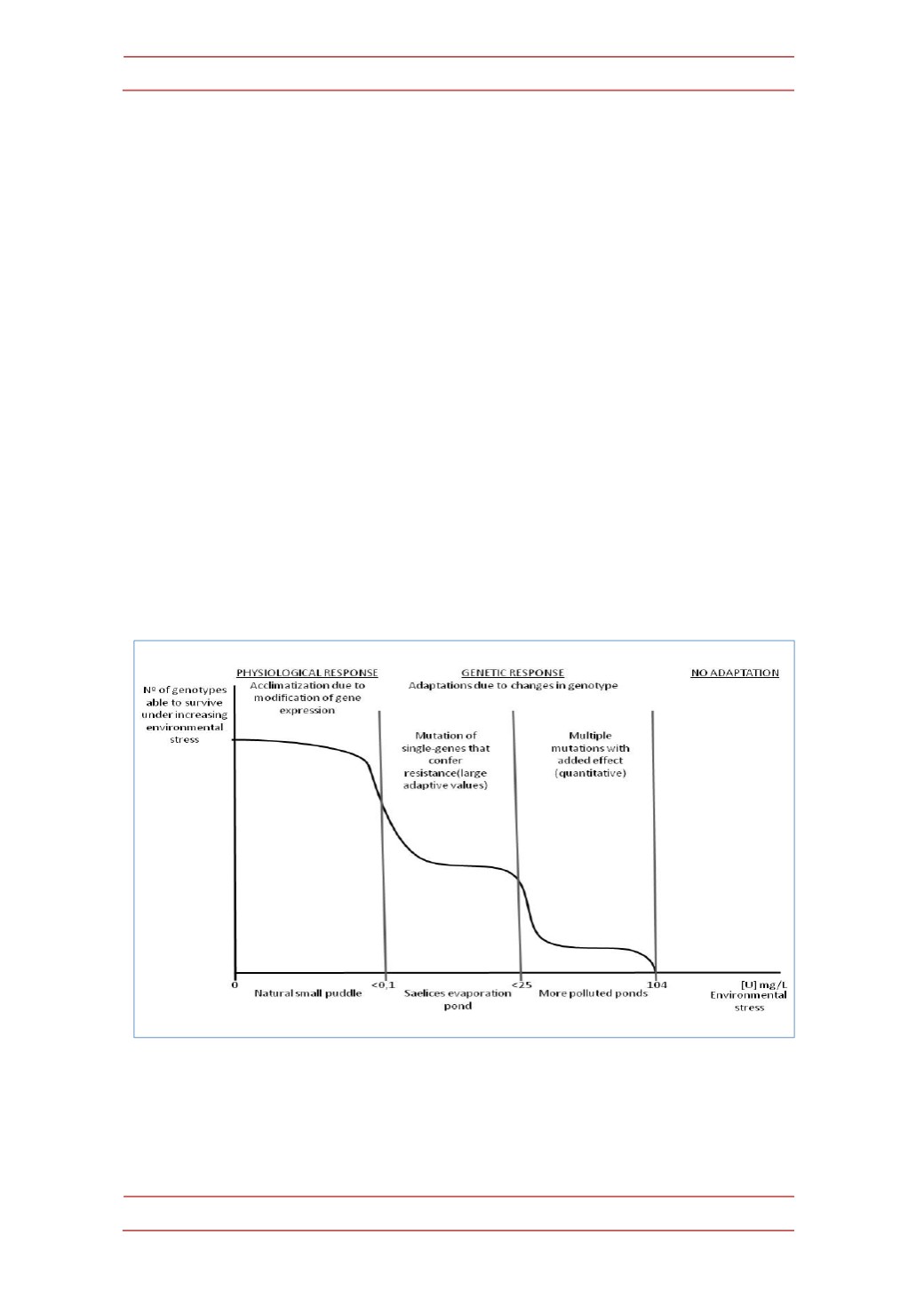
Beatriz Baselga-‐Cervera& col.
640
cultures fluctuates from more than 10
5
resistant cells ml
-‐1
to 0 resistant cells ml
-‐1
,
whereas all the set 2 cultures showed around 10
2
resistant cells ml
-‐1
).
Consequently, the U-‐resistant cells arose randomly by rare, pre-‐selective,
spontaneous mutations and not as a response to the effect of residual waters from
U mining (i.e. by specific physiological acclimatization, adaptive mutants or post-‐
selective mutations). These U-‐resistant mutants were isolated and maintained in
BG-‐11 medium in the absence of the selective agent (i.e. residual waters from U
mining), then confirming that the culture was able to retain resistance to residual
waters of U-‐mining throughout successive generations.
The rapid colonization by microalgae Saelices evaporation pond can be
explained following an Occam’s razor line of reasoning: i) new U-‐resistant mutants
arise prior to the uranium exposure, because mutation is recurrent; ii) prior to the
uranium exposure many of these U-‐resistant mutants are eliminated by selection
or by chance; iii) The balance between new U-‐resistant genotypes appeared by
mutation and the U-‐resistant genotypes eliminated by selection will determine that
a small number of U-‐resistant mutants are presents within microalgae populations
at a given time. When uranium contamination occurs, U-‐sensitive wild type cells
die and only the U-‐resistant cells are able to colonize the new extreme
environment (Figure 3).
Figure 3.-‐
Graphic work representation of the number of genotypes able to survive under an
increasing environmental stress present among the studied ponds due to the uranium
concentration and the adaption strategy depending in the uranium concentration.
Recent evidences suggest that mutations of single-‐genes that confer a large
adaptive value do happen and, when competing with multiple small-‐effect
mutations, they usually win (reviewed by Chouard (22)). In our experience over


